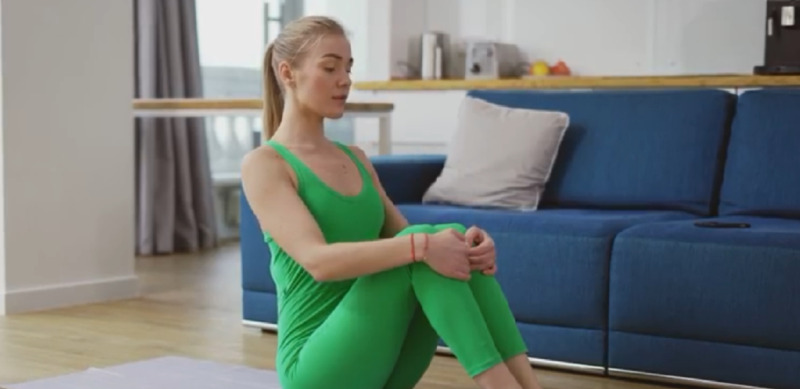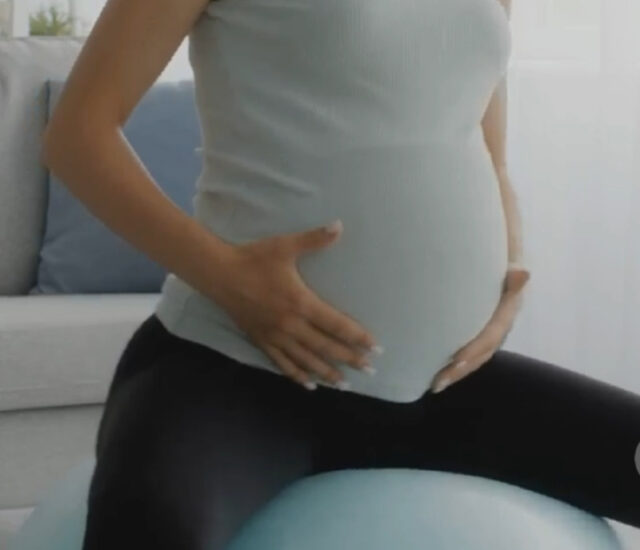Why Kegel Exercises Should be Part of Your Fitness Routine

Anyone who is a “Sex and the City” fan may remember the wisdom imparted by Samantha Jones about Kegels. In fact, she did her Kegel exercises as she sat at brunch with the girls. The pop culture mentions and magazine articles extolling the benefits of Kegel exercises have made Kegels a part of our collective consciousness since they were invented in the 1940s (by Dr. Arnold Kegel, naturally).
Although not often part of a typical exercise regimen, Kegels are an integral part of overall fitness. Many may remember Kegels from their postpartum recovery instructions, but these exercises have far-reaching benefits that extend well beyond postpartum wellness.
What are Kegels?
Kegel exercises sound simple enough, but when done correctly, they can be exceedingly powerful in enhancing pelvic floor strength. They are a series of muscle contractions aimed at bolstering the muscles that support the pelvic organs. The pelvic floor muscles combined form a sling-like structure that extends from the pubic bone to the tailbone and provides support for crucial bodily functions, such as continence.
By contracting and relaxing these core muscles, one can enhance muscle strength, endurance, and control.
For bladder leaks and beyond
Kegels are a popular exercise that OB-GYNs recommend following the birth of a baby for recovery, but can help a range of patients beyond new mothers. Gloria Kolb immediately recognized the utility of Kegel exercises while studying therapies to treat bladder leakage. She learned that one in three women over the age of 30 suffered from urinary incontinence, and once she began having children of her own, the issue became more apparent.
Kolb wanted to specifically target the market that struggled with bladder leaks. “When the pelvic floor muscles are weak, they just cannot hold the urinary valve closed when there’s pressure placed on the bladder, including pressure caused by sneezes, jumps, or exercises. We’re toning that underlying muscle system,” Kolb explains. “As women, we rarely talk about leaks, so, unsurprisingly, many women don’t know how common they are, but also how simple the solution can be.”

Where to start
Starting Kegel exercises is relatively easy.
First, you must identify the core pelvic floor muscles. You can do this by getting in touch with your own body and muscle control. The next time you are urinating, try to stop the urine mid-flow. Those muscles that you’re using to make that happen? Those are your pelvic floor muscles. What you just did was a Kegel. However, doctors caution people against practicing Kegels when they urinate, as it can cause bladder issues.
If you don’t want to mess with your urine flow, your pelvic floor muscles are also the ones you use to stop the flow of gas from escaping, so you can imagine activating those muscles as well (or practice next time you have a bean burrito).
Once you’ve identified the correct muscles, place yourself in a comfortable position. You can do your Kegels lying down, sitting up, or standing (or, if you are Samantha Jones, while sipping a Cosmopolitan at a hip new bar). Wherever you choose to practice your Kegels, it’s important to find somewhere comfortable to concentrate on isolating the correct muscles.
Ready . . . go!
Once you’re settled in, get to work contracting those muscles. Hold the contracting for 3-5 seconds each time. You can start with 10 contractions at first and then work your way up. Aim for three sessions of Kegels a day and expect to start seeing results in as little as a few weeks.
With Kegels, consistency is key. Ideally, people should be doing their contractions daily. Ensure that you are contracting the correct muscles and progress gradually to more exercises at a time. If you are unsure about the proper technique or having issues performing Kegels properly, seek professional guidance. There are even Kegel weights available to add some diversity to your pelvic workout routine.
“To the women out there, I encourage them to seek treatment early,” says Kolb, whose device has helped thousands of women strengthen their pelvic muscles and avoid worsening incontinence issues. “Incontinence is one of the number one reasons people end up in nursing homes,” Kolb continues.
It’s clear that caring for pelvic floor help can have far-reaching positive benefits, even in old age.
Incorporating Kegels into the everyday
Kegel exercises are relatively discreet and can be easily incorporated into your everyday routine. People should try to set reminders for themselves to do their Kegel exercises. This can be on their phone or even through a simple sticky note. Doing the exercises at the same time every day will help make them more routine and less likely to be forgotten.
Kegels can easily be performed on your daily commute, at your desk, or as you lie down to go to sleep. You can also incorporate them into your regular workouts as a means of remembering. For extra incentive, perhaps do your Kegel exercises with your partner — they can benefit as well!
The humble yet powerful Kegel exercise stands as an essential component for both men and women. Kolb is adamant that when people suspect an issue with their pelvic floor, they should not wait to seek help. “It drives me crazy that people do wait so long, and they don’t tell anyone, and they just deal with it for a long, long time,” she says, “I think part of it is they don’t think that there are any other good options for them.”
The more people recognize the power of the Kegel and arm themselves with a commitment to consistency, the more they can embrace them not only as exercises but also as integral tools in nurturing and maintaining overall health and vitality.
For Those Needing Something Beyond Basic Kegel Exercise
Kolb knew she had to seek a solution, but was dismayed by the options. So, she set out to create one, and the result was Elitone.
Everyone should start with doing old-fashioned Kegels since they are free and you can do them anywhere. However, a quarter of women do them incorrectly, and much of the rest do them insufficiently. That is where an innovative tool such as the Elitone can help and bring results in a matter of weeks — meaning less incontinence and even enhanced sexual function.
This guest post was authored by Gloria Kolb
Gloria Kolb is the CEO and co-founder of ELITONE®, an FDA-cleared, non-invasive wearable treatment for women with urinary incontinence.
As an inventor with 30 patents, Gloria’s accolades include Best New Product of 2019 by My Face My Body awards, Sling Shot 2020, and a top 10 finalist in Google’s Women Startup Challenge. Gloria has also been featured in Forbes as a Top Scientist Driving Innovation in Women’s Health. Her creative designs and problem-solving abilities have earned her recognition, such as Boston’s “40 Under 40” Award and MIT Review’s “World’s Top Innovators under 35”.
With Mechanical Engineering degrees from MIT and Stanford and an Entrepreneurship MBA from Babson College, Gloria’s expertise extends to consulting, where she evaluates technology and clinical markets for various inventions and startups.

